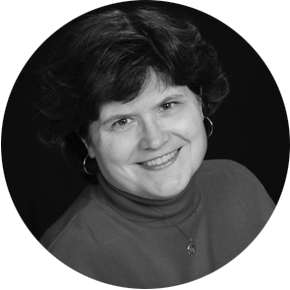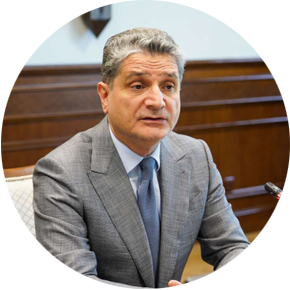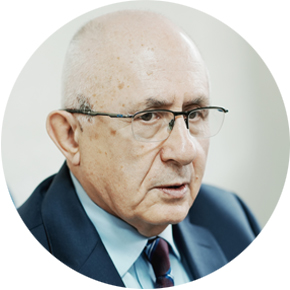The Ministry of Education, Science, Culture and Sport of Armenia has launched the revision of national and subject norms of general education.
A group of local and foreign experts will prepare the report establishing the school subjects, grading system, teaching methods, main curriculum, and the knowledge that students must possess by the time they graduate.
Mary Ann Huntley is a Senior Lecturer of Mathematics and the Director of Mathematics Outreach and K-12 Education Activities in the Department of Mathematics at Cornell University in Ithaca, N.Y. (U.S.). Her research involves examining the middle- and high-school mathematics curriculum from various perspectives, including the intended, enacted, and achieved curriculum, with a particular focus on the algebra strand of the curriculum. Awards for her scholarly work include a National Academy of Education Spencer Postdoctoral Fellowship and an American Association of Colleges of Teacher Education Outstanding Dissertation Award. She has a background in applied mathematics, and previously served as a program officer in Instructional Materials Development at the U.S. National Science Foundation. Mary Ann Huntley is a co-editor of the book series Research in Mathematics Education, published by Information Age Publishing.
Peculiarities and issues of teaching mathematics in Armenia
Three things have jumped out at me, when I compared the K-12 mathematics curriculum in the United States with the Armenian curriculum. First, according to the Armenian mathematics curriculum documents that I have seen, a lot of ground is being covered in mathematics from grades K-12, and the content accelerates quickly. For instance, in Armenia, students learn algebra in grade 7, whereas in the United States, it’s common for students to take a full-year course in algebra in grade 9. Moreover, the grades 11-12 content in Armenia includes a lot of topics that we typically cover at the university level. So, this really isn’t a problem; it’s just a difference.
Second, I have not seen any learning progressions documents (perhaps these trajectories/progressions documents exist in Armenia and it’s just the case that I have not seen them) that outline how concepts and student understanding develop over time. Learning progressions help teachers understand the order of content across the grade levels; e.g., a teacher can see what students learned about the topic in prior grades, what emphasis to place on the topic this year, and what comes later regarding the content. In this way, progressions help create a coherent curriculum – it gives teachers information about how content builds.
Third, in the documents that have been shared with me, I have seen references to content, with a notable absence of anything regarding mathematical processes. These are what students are doing as they learn mathematics in order to develop a deep, flexible, usable, and enduring understanding of mathematics. Again, perhaps such information just has not been made available to me.
Varying ways to use mathematics
The underlying mathematical content does not change, but the applications of the mathematical content certainly do change. But aside from applications, what changes in mathematics curricula over time is the ordering and emphases of content, as well as how it is taught. For instance, there is active research taking place in the field of early algebra. This isn’t the algebra that most people think of. Mathematical modeling and functions are two topics that are emphasized much more heavily in the United States mathematics curriculum now, compared with 40 years ago. In terms of how mathematics is taught, there is robust research suggesting that children know a lot of mathematics before entering school – content that can (and should) be capitalized on by teachers. Also, young students learn better when given the opportunity to invent their own methods of solution before being taught standard algorithms.
How to make students like mathematics
I recommend as much as possible showing students the applications of mathematics. If the content is beyond students, `s can at least mention some contexts that are familiar and likely of interest to students, such as ATM transactions, video games, graphics/animations in movies, Internet browsing, and space exploration. All of these are possible only because of mathematics.
Also, as much as possible, I recommend getting children interested in mathematics in out-of-school contexts. At Cornell University I offer math clubs for grades K-12 students. Much of the content that is covered in math clubs lies outside the traditional school curriculum. Some of the content includes topics that students do not normally see until their third or fourth year of college. We offer this content in a way that is accessible to younger students. It is a big challenge for graduate students and professional mathematicians to learn how to communicate more complicated content in simpler terms, but at the same time, they find it very rewarding, and such activities seem to make an impact on K-12 students. The content is taught in an interactive fashion (i.e., heavy student involvement, with minimal lecturing), often using games and puzzles. From such experiences, K-12 students are able to widen their perspective about the field of mathematics. Math is everywhere. Math is fun!
The need to support teachers
I am currently editing a book that examines mathematics teacher education from an international perspective. We’re at an early stage, but my co-editors and I have received drafts of chapters from authors in several countries, with more coming soon. One common theme across the various countries that are represented in the book is the challenge of recruiting people to teach mathematics. I know that in the United States, the difficulty of recruiting and preparing teachers presents a serious problem, and the teacher shortage is leading many states, districts, and schools to hire teachers with “emergency certifications” that do not reflect the national teacher education standards.
Certainly teaching can be made more attractive if scholarships are provided during teacher preparation, and higher salaries are offered upon graduation. But the early years of teaching, the induction period, is also a very important time in the development of teachers. In the United States, almost half the mathematics teachers decide not to continue teaching within their first five years in the field. Support must be provided to beginning teachers. I believe if people knew that they would be supported during the critical first years of their teaching, that might attract and motivate more people to enter the profession.
Lusine Gharibyan talked to Andy Smart





















Comments
Dear visitors, You can place your opinion on the material using your Facebook account. Please, be polite and follow our simple rules: you are not allowed to make off - topic comments, place advertisements, use abusive and filthy language. The editorial staff reserves the right to moderate and delete comments in case of breach of the rules.